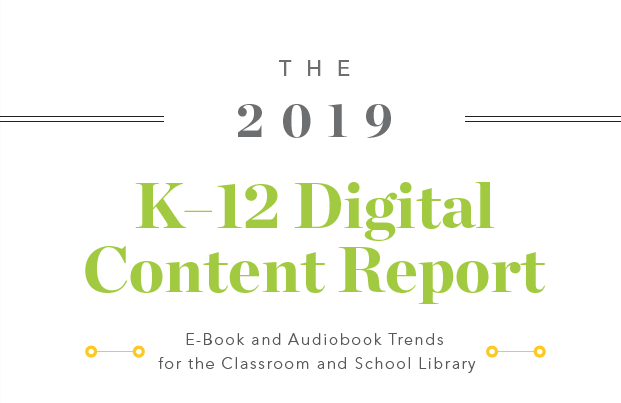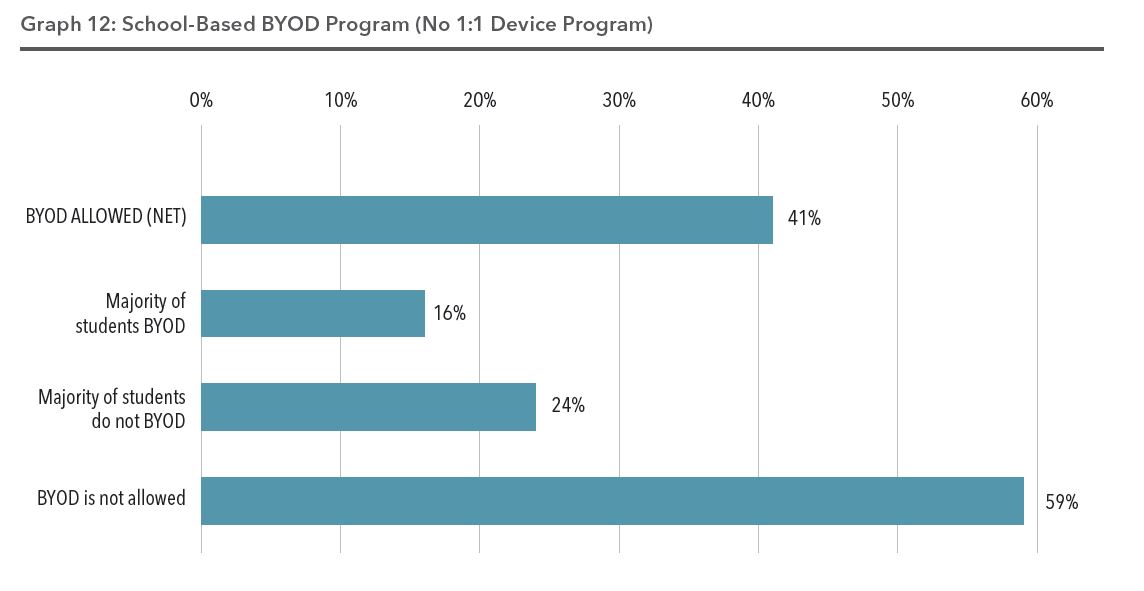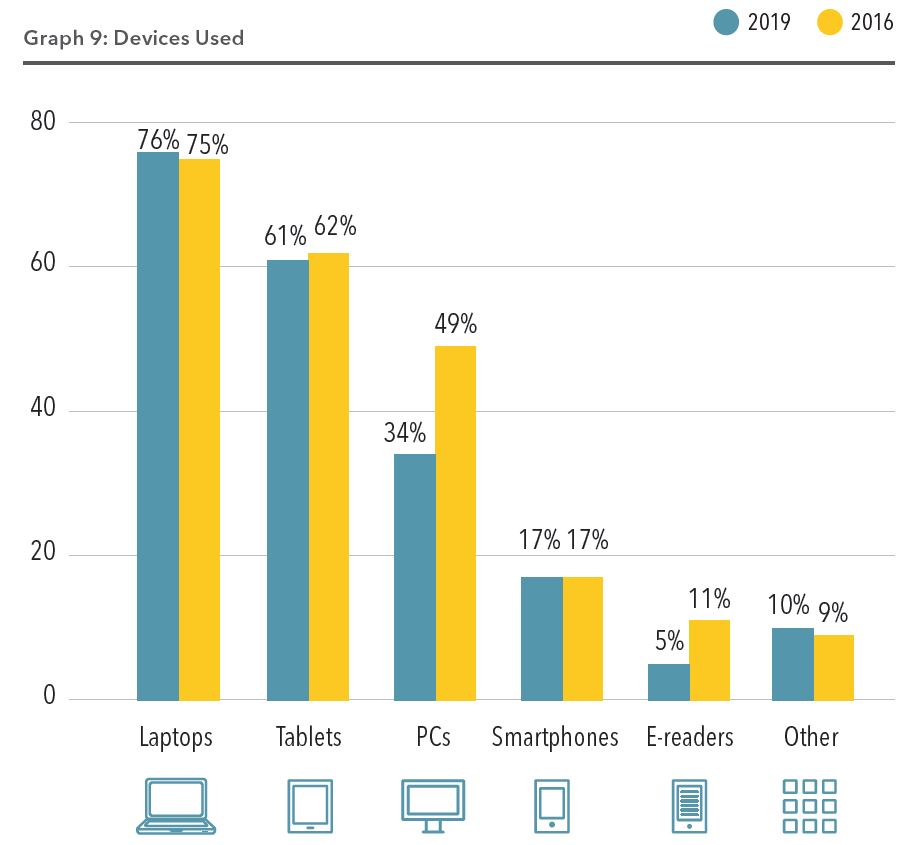
The 2019 K-12 Digital Content Report: What devices are students using? (Part 3)
By: Alecia Mouhanna, Marketing and Communications Specialist
This series analyzes data from the newly released 2019 K-12 Digital Content Report co-sponsored by ASCD and OverDrive Education. The report aggregates responses from 2,000 K-12 administrators to identify how ebooks and audiobooks are currently being used, in addition to attitudes toward them and future plans.
In the first two installments, we identified trends in digital content usage and instructional materials budgets. This week, we’ll explore the prevalence of 1:1 vs. BYOD device programs and which devices students are using to read ebooks and audiobooks.
The prevalence of 1:1 device programs in schools
According to the report, around half of survey respondents’ schools – 49% – have implemented a 1:1 device program, representing a 23% increase over 2016. Of the schools without a 1:1 device program in place, 19% indicated plans to add one in the future. Check out the breakdown below for a more detailed look at the numbers:

Of the 51% of schools that do not currently have a device program in place, 41% allow students to bring their own devices into the classroom – so devices are common, even if they’re not school-issued.

1:1 device programs AT THE DISTRICT LEVEL
Things skew even more heavily toward digital at the district level. According to the report, 76% of district-based administrators reported having a 1:1 device program in place in at least some schools or grades. Of these districts, 39% responded that 1:1 device programs were in place in every school.

In districts that did not report having a 1:1 device program, the vast majority – 65% – allow students to bring their own devices into the classroom.

This all adds up to an educational environment that is increasingly digitized – in turn making ebooks and audiobooks an even more powerful tool to support classroom learning.
Which devices are students using?
So, which devices do students use most frequently? Laptops are far and away the most popular choice for digital content access, with 76% of administrators reporting their use. Tablets are a relatively close second at 61%.
Though PCs were the third most-commonly used devices for reading ebooks and audiobooks, the share of administrators reporting their use by students actually fell sharply, from 49% in 2016 to 34% – indicating how important it’s become for students to have mobile access.
Here’s the full breakdown of device use:

To learn more about digital content in schools, be sure to download The 2019 K-12 Digital Content Report.
Check out more from The 2019 K-12 Digital Content Report:
Browse blog and media articles
Public Library Training
K-12 Library Training